Please check the boxes for the options that you would like to add. Leave all boxes unchecked for unit only.
- 877-477-7823
- Back All Categories
- Back Airframe Parts
- Back Avionics
- Back Books & Videos
- Back Composite Materials
- Back Covering Supplies
- Back Electrical
- Back Engine Parts
- Back Hardware
- Back Instruments
- Back Kits & Plans
- Back Landing Gear
- Back Metals and Plastics
- Back Pilot Supplies
- Back Wood Products
- Back Shopping Tools
- Shop By Brand
- Back Parts Finder
- I'm looking for Part Name for a Make Model
- Back Order by Part Number
- To add more PNs, please click here

- Photo may represent series and not specific product

Aircraft Journey Logbook

View in Catalog
- Inside Page Sample
- Frequently Purchased With
- Customers Also Viewed
- Related Items
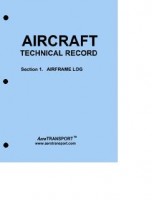
Received items on time. Great service! Kind Regards, Judy
ATP AIRCRAFT JOURNEY LOG
Nice log book awesome
As advertised.
I wanted a hard cover Journey Log, and that is exactly what I received.
An excellent a hard cover journey log. The hard cover journey logs bindings last much longer then the soft cover. I have every journey log from birth a total of 14 for my A/C and they are all in perfect condition as they are all hard cover.
Very good aircraft log book. Great, easy layout. Highly recommended.
Im actually more proud of this thing than I should be. The one that came with my plane had its first entry in 1882 when it came to Canada. In the interests of preserving the data in there, I retired it and replaced it with this one. The book is of a high quality. The pages are thick, and the hard cover feels like it can take some abuse and go many years. The pages look to be bound very well. It contains the pertinent law about documentation required in the log inside as a handy reference. It has cut down on documenting non essential items and includes a hobs time which I like. It also has a spot at the bottom of each page couple for tracking up coming Maintenence. This should last another 36 years!
It came with damage to the bottom binding. It was probably something that happened during shipping, but there should have been better protective packaging. I am not impressed.
Please note, Aircraft Spruce's personnel are not certified aircraft mechanics and can only provide general support and ideas, which should not be relied upon or implemented in lieu of consulting an A&P or other qualified technician. Aircraft Spruce assumes no responsibility or liability for any issue or problem which may arise from any repair, modification or other work done from this knowledge base. Any product eligibility information provided here is based on general application guides and we recommend always referring to your specific aircraft parts manual, the parts manufacturer or consulting with a qualified mechanic.
This is a full size Journey log book. 8.5 inches X 11 inches. and the thickness is 0.59 inches which just a tad bit thicker than your current one.
Yes this is same as TPI4089B, this is considered an upgraded version with more information and non-removable pages.
Flight Crew Guide
Search our database, journey log.
(a) An operator shall retain the following information for each flight in the form of a journey log: 1. aeroplane registration; 2. date; 3. name(s) of crew member(s); 4. duty assignment of crew member(s); 5. place of departure; 6. place of arrival; 7. time of departure (off-block time); 8. time of arrival (on-block time); 9. hours of flight; 10. nature of flight; 11. incidents, observations (if any); and 12. commander’s signature (or equivalent).
(b) An operator may be permitted not to keep an aeroplane journey log, or parts thereof, by the Authority if the relevant information is available in other documentation.
(c) An operator shall ensure that all entries are made concurrently and that they are permanent in nature.
Source: EU-OPS
Share this:
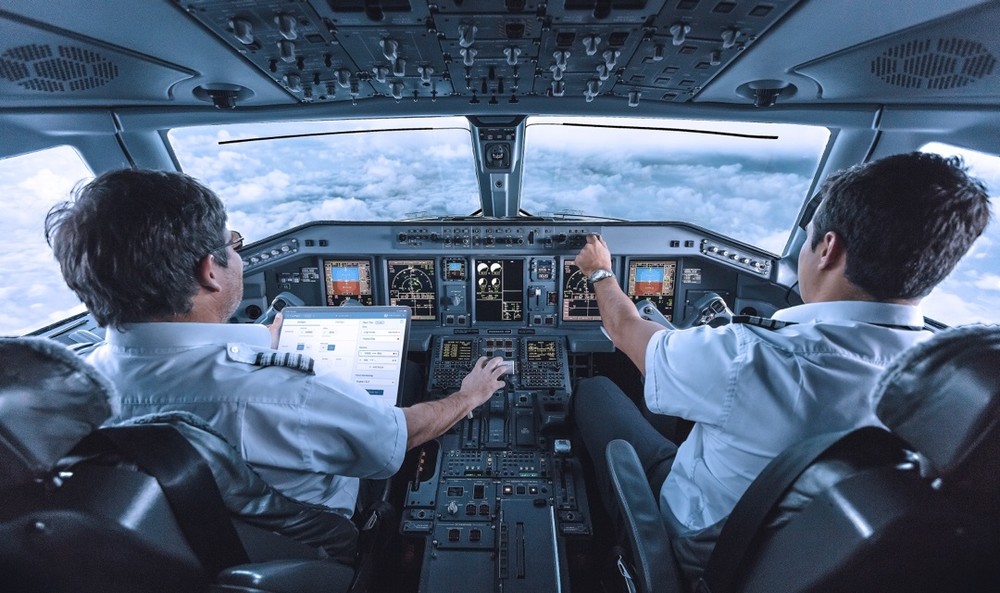
Electronic Tech Logs & how they can improve your operation
If you’ve ever glanced into the cockpit before or after a flight, there’s a good chance you’ll have seen one of the flight crew filling out a thick binder of paper forms. These forms make up what’s often referred to as the Aircraft Technical Log, Journey Log or, just the Aircraft Logbook. The digitization of this paper-based process provides many benefits to operators including cost reduction, delay reduction, and the opportunity for greater analytics surrounding aircraft operational performance and reliability. This article will explore how Electronic Tech Logs can achieve this and what steps operators should take to maximize the benefits.
What is an Aircraft Technical Log?
The Aircraft Technical Log (‘tech log’) is a process used to record and document the airworthiness status of the aircraft. Principally, the tech log will consist of a form completed on each flight or trip and supporting documentation on maintenance procedures and any deferred defect or damage on the aircraft.
The form is used to record aircraft utilization information such as flight times and cycles, alongside information on when the next scheduled maintenance is due, details of any open or deferred defects, and details of the last maintenance release.
The tech log is regulated for European operators under EASA Part-M/Part-CAMO regulations, but in other jurisdictions operators will often carry out a variation of a similar process. In some cases, these processes may be referred to as the Journey Log or Aircraft Logbook.
The forms filled out in the tech log are usually completed on carbonized paper to retain a copy on the aircraft and distribute the others to ground handling agents and the operator’s maintenance management team. As a paper process, this has its challenges, primarily: the risk of induced errors; the time required to process the paperwork; and the delays in the availability of information.
Errors in the paperwork are a common occurrence arising in 30-50% of all tech log entries, and these can cause significant risks to operators.
Firstly, as the hours and cycles recorded are used to determine when to carry out maintenance, a deviation either way from the correct value can either lead to a shortened, and therefore more expensive, maintenance interval, or the risk of missing a maintenance task and generating safety implications.
Additionally, on many aircraft under hourly maintenance programs, the cost of misrepresented aircraft hours can add up quickly.
Availability of data also causes challenges for operators. With a paper process, it can take days for details of a defect or a deferred item on an aircraft to be processed, and this can lead to reduced timescales to source parts and the risk of an aircraft left AOG. Recent changes introduced due to Covid-19 such as remote working have also created challenges in managing a physical paper process which requires the handling of original copies of paperwork and manual entry into maintenance systems.
Electronic Tech Log
An Electronic Tech Log, as the name suggests, is an electronic equivalent of the paper tech log process. Electronic Tech Logs come in many different guises from basic forms through to more sophisticated digital workflow applications such as TrustFlight’s Tech Log - these allow operators to not only replace the paper system but also leverage all of the benefits from a digital platform.
TrustFlight’s Tech Log is the leading System for business aircraft operators and provides a simple and intuitive app that can be installed on an operator’s existing iPad EFB device. This iPad app provides flight crew and engineers with a work-flow based approach to completing the tech log, with pre-filled data where available, and validation on any entries by the user. This is a different approach to many other systems which take the existing tech log form and just create a digital copy of it on a tablet.
In addition to the iPad app, TrustFlight’s system includes a complete management dashboard which allows the operator to view real-time information on their fleet status, open defects as well as managing integrations with popular systems in use throughout the industry such as CAMP.
The primary reason operators adopt an Electronic Tech Log is to save cost. This is initially gained through time savings from pilots creating the logs, and technical records clerks who must check and enter the logs into various maintenance tracking and scheduling systems.
With the electronic system, initial entry is quick and data is automatically imported into the various third-party systems. In total, this can save approximately 40 hours of work per aircraft per month.
This 40 hour saving greatly reduces the cost of processing tech logs, however, the hidden costs of inaccuracies can be much larger. As an example, a large business aircraft operator found they were overreporting utilization on one of their aircraft by over 20 hours a year, amounting to an extra $20k spent in maintenance program payments unnecessarily.
When it comes to managing defects on an aircraft, speed and access to up-to-date information are key. This is an area where the Electronic Tech Log shines as defects can easily be entered in the system at which point all required personnel are notified in real-time, and work can be started to resolve the items - even if the aircraft is in the air.
Additionally, being able to rapidly defer items on an aircraft in a quick and compliant manner can help significantly with reducing delays. TrustFlight’s Tech Log includes a complete digital MEL, which highlights relevant items and guides the user through all the requirements for deferral - an area operators commonly struggle to comply with.
Finally, one further benefit of an Electronic Tech Log is with the right system, data can be recorded to a much higher equivalent and with better compliance compared to a paper system. This allows more detailed analytics to be conducted on the aircraft to identify trends on defect reports or items such as delay factors.
Also, when it comes to selling an aircraft, being able to instantly provide a complete history of logs will prevent any risk of delays in transactions or difficulties when it comes to financing the asset.
How to get started
The system integrates with many of the common maintenance tracking and scheduling systems in use today, so with a short period of running the Electronic Tech Log alongside the existing paper process, an operator can switch over to the TrustFlight system and see benefits in a matter of weeks.
TrustFlight currently has multiple major business aircraft charter operators using the system within Europe, North America and the Middle East, including Flexjet & TAG Aviation.
Please contact [email protected] to learn how we can help your operation

Let's get started
Talk to our sales team to find out how you can transform your operation with our products and services.
Join the TrustFlight newsletter
Stay informed of aviation technology developments that could impact your operations.
Contact details
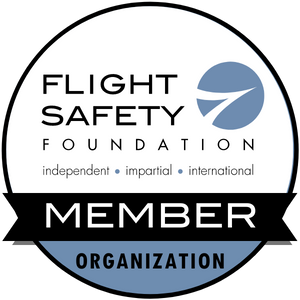
Aircraft logbook

Digital aircraft logbook is an official and legal way by EASA MLR.110 and FAA AC 120-78A. All your pilots with a copy of the aircraft journey log in the smartphone.
Following export formats are available:
- ICAO Annex 6(Part I) Journey Log
- EASA MLR.110 Journey log
- Legacy Journey/Technical Log

A Complete Manual for Conducting International Flight Operations
Journey Log
The term Journey Log may mean different things to different operators. For some operators the “Journey log” may be comprised of several different documents, one document that tracks the aircraft and inspections, another document that provides the specifics of the departure and arrival points and crewmember assignments.
Other than navigating the aircraft the most important reason for having a complete Journey Log is having the necessary documentation to provide to a SAFA inspector.
Any findings that the inspector discovers with respect to the Journey log will be recorded. Typical findings would be things such as inconsistent data, flight details not recorded in the journey log, journey logbook not onboard, etc.
ICAO Recommendations for
Journey Log Documentation (ICAO Annex 6)
- Aircraft nationality and registration
- Crew member names and duty assignments
- Departure and arrival points and times
- Purpose of flight
- Observations regarding the flight
- Signature of the pilot in command
SAFA Checklist (item A21)
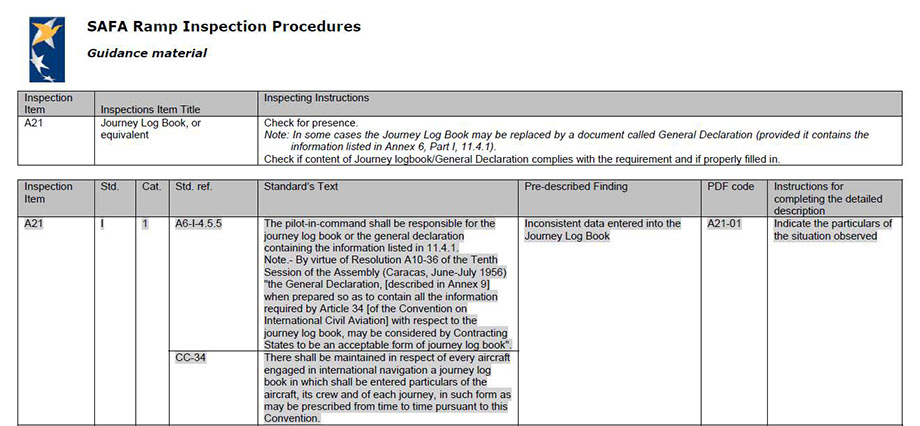
NAV Envelope
Scott IPC produces a “NAV Envelope” which can be used to carry documents and has checklist items on the exterior of the envelope which serve to meet most of the requirements for the Journey Log.
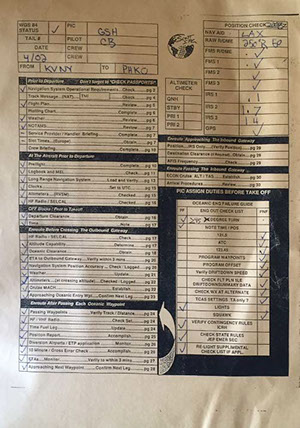
Revision date: July 29, 2015
View Update Log
JOIN THE CONVERSATION

The material contained on this site is to be used for reference only. You should always follow your primary resources first (aircraft manuals, government regulations, etc.).
Savant Aero is no way affiliated with any aircraft manufacturers.

Journey Log Book
There was once a huge controversy over what exactly constitutes a journey logbook. Everybody agreed you had to have one, but what is it? The original requirement was set out in 1944 without a precise definition. ICAO Annex 6 changed all that a few years ago, but we are still left with a decision on where the book should be kept.
— James Albright

The only document we have that comes even close to satisfying all the requirements are the Flight and Maintenance Log that we complete for every flight. You will have to examine your version to see if it also satisfies the ICAO.
As for how long you need to keep it on the aircraft, that's where it gets tricky. More on that below.
For you grammar fans, I agree it should be "logbook" (one word) but the original Chicago Convention uses two, so I'll do that here.
1 — Where (and when) it all started . . .
2 — Updated guidance for commercial operators
3 — Updated guidance for general aviation

Where (and when) it all started . . .
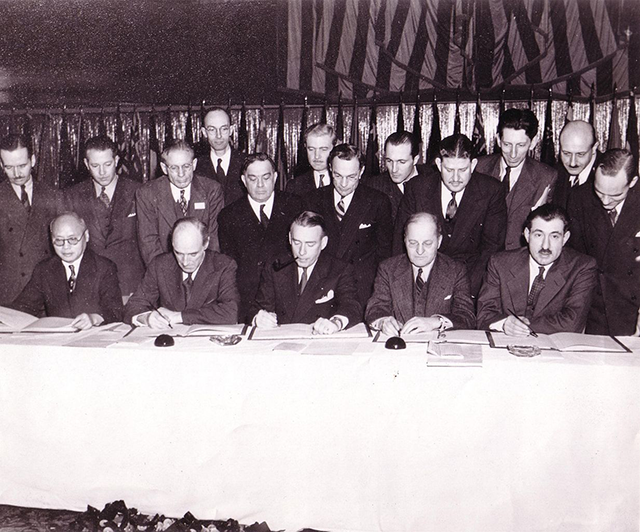
The 1944 Chicago Convention on Civil Aviation
There shall be maintained in respect of every aircraft engaged in international navigation a journey log book in which shall be entered particulars of the aircraft, its crew and of each journey, in such form as may be prescribed from time to time pursuant to this Convention.
Source: 1944 ICAO Chicago Convention , Article 34
Updated guidance for commercial operators
11.4.1. The aeroplane journey log book should contain the following items and the corresponding roman numerals:
- Aeroplane nationality and registration.
- Names of crew members.
- Duty assignments of crew members.
- Place of departure.
- Place of arrival.
- Time of departure.
- Time of arrival.
- Hours of flight.
- Nature of flight (private, aerial work, scheduled or non-scheduled).
- Incidents, observations, if any.
- Signature of person in charge.
11.4.2 Recommendation.— Entries in the journey log book should be made currently and in ink or indelible pencil.
11.4.3 Recommendation.— Completed journey log book should be retained to provide a continuous record of the last six months’ operations.
Source: ICAO Annex 6 Part I
Paragraph 11.4.3 recommends the journey log book be "retained" but doesn't say it has to be on the aircraft. I think if you have electronic access to them you should be okay.
- The aircraft journey log, or equivalent, should include the following items, where applicable:
- aircraft nationality and registration,
- name(s) of crew member(s),
- duty assignments of crew member(s),
- place of departure,
- place of arrival,
- time of departure,
- time of arrival,
- hours of flight,
- nature of flight (scheduled or non-scheduled),
- incidents, observations, if any,
- signature of person in charge.
- The information, or parts thereof, may be recorded in a form other than on printed paper. Accessibility, usability and reliability should be assured.
- 'Journey log, or equivalent' means that the required information may be recorded in documentation other than a log book, such as the operational flight plan or the aircraft technical log.
- 'Series of flights' means consecutive flights, which begin and end:
- within a 24-hour period;
- at the same aerodrome or operating site or remain within a local area specified in the operations manual; and
- with the same pilot-in-command/commander of the aircraft.
Source: EASA Air Ops Annex 1 to VIII ] §AMC1 ORO.MLR.110]
Updated guidance for general aviation
2.8.2 A journey log book shall be maintained for every aeroplane engaged in international air navigation in which shall be entered particulars of the aeroplane, its crew and each journey.
2.8.2.2. Recommendation.—The aeroplane journey log should contain the following items:
- aeroplane nationality and registration;
- crew member names and duty assignments;
- departure and arrival points and times;
- purpose of flight;
- observations regarding the flight; and
- signature of the pilot-in-command.
Source: ICAO Annex 6 Part II
Particulars of the aircraft, its crew and each journey shall be retained for each flight, or series of flights, in the form of a journey log, or equivalent.
Source: EASA Air Ops Annex 1 to VIII , §GM1 ORO.MLR.110
We scan every flight log and have it electronically available at our home base on a full time, secured, network drive. We can download any log from anywhere with an Internet connection. We only carry enough past flight logs on the aircraft to prove a maintenance airworthiness release, a valid VOR check, and an RVSM check. Will this pass muster? I think so. I have been SAFA ramp checked and the subject never came up. I shared the stage at an NBAA International Operators Conference with a SAFA inspector and asked the question directly. The inspector agreed that an "electronic journey log book" will be sufficient.
(Source material)
Convention on International Civil Aviation Done at Chicago on the 7th Day of December 1944
EASA Air Ops Annex 1 to VIII, European Aviation Safety Agency, 09 May 2017
ICAO Annex 6 - Operation of Aircraft - Part I Commercial Aircraft, International Standards and Recommended Practices, Annex 6 to the Convention on International Civil Aviation, Part I, Eleventh Edition, July 2018
ICAO Annex 6 - Operation of Aircraft - Part II General Aviation, International Standards and Recommended Practices, Annex 6 to the Convention on International Civil Aviation, Part II, Tenth Edition, July 2018
Please check the boxes for the options that you would like to add. Leave all boxes unchecked for unit only.
- 1-877-288-8077
- Back All Categories
- Back iPad/iPhone/Android
- Back Avionics
- Back Aviation GPS
- Back Aviation Headsets
- Back Aeronautical Charts
- Back Airport Supplies
- Back Books & Videos
- Back Camera Systems
- Back Crew Gear
- Back ELTs & PLBs
- Back Flight Planning
- Back Flight Simulation
- Back Gifts for Pilots
- Back Instruments
- Back Radios / Transceivers
- Back Pilot Supplies
- Browse Headsets
- Back Quick Product Filter
- I'm looking for Part Name with Make Model
- Back Order by Part Number
- To add more PNs, please click here

- Photo may represent series and not specific product
Aircraft Journey Logbook

- Inside Page Sample
- Frequently Purchased With
- Customers Also Viewed
- Related Items

Received items on time. Great service! Kind Regards, Judy
ATP AIRCRAFT JOURNEY LOG
Nice log book awesome
As advertised.
I wanted a hard cover Journey Log, and that is exactly what I received.
An excellent a hard cover journey log. The hard cover journey logs bindings last much longer then the soft cover. I have every journey log from birth a total of 14 for my A/C and they are all in perfect condition as they are all hard cover.
Very good aircraft log book. Great, easy layout. Highly recommended.
Im actually more proud of this thing than I should be. The one that came with my plane had its first entry in 1882 when it came to Canada. In the interests of preserving the data in there, I retired it and replaced it with this one. The book is of a high quality. The pages are thick, and the hard cover feels like it can take some abuse and go many years. The pages look to be bound very well. It contains the pertinent law about documentation required in the log inside as a handy reference. It has cut down on documenting non essential items and includes a hobs time which I like. It also has a spot at the bottom of each page couple for tracking up coming Maintenence. This should last another 36 years!
It came with damage to the bottom binding. It was probably something that happened during shipping, but there should have been better protective packaging. I am not impressed.
Please note, Pilotshop.com's personnel are not certified aircraft mechanics and can only provide general support and ideas, which should not be relied upon or implemented in lieu of consulting an A&P or other qualified technician. Pilotshop.com assumes no responsibility or liability for any issue or problem which may arise from any repair, modification or other work done from this knowledge base. Any product eligibility information provided here is based on general application guides and we recommend always referring to your specific aircraft parts manual, the parts manufacturer or consulting with a qualified mechanic.
This is a full size Journey log book. 8.5 inches X 11 inches. and the thickness is 0.59 inches which just a tad bit thicker than your current one.
Yes this is same as TPI4089B, this is considered an upgraded version with more information and non-removable pages.
FLAP - Journey Log 4+
Tecnibite sa, designed for ipad, ipad screenshots, description.
FLAP® Journey is the electronic version of the journey log report carried in every commercial aircraft, allowing the captain to register the journey log data through an iPad device. FLAP® Journey has a set of forms to allow users to view and update flight times, takeoff and landing data, flight delays and delay reasons, crew assignment and roles, fuel and de-icing information, passenger data, and on board equipment. The system can easily be updated with a set of customized forms in order to extend the standard journey log form.
Version 1.9.1
Add support for iOS native Dark Mode
App Privacy
The developer, Tecnibite SA , indicated that the app’s privacy practices may include handling of data as described below. For more information, see the developer’s privacy policy .
Data Not Collected
The developer does not collect any data from this app.
Privacy practices may vary, for example, based on the features you use or your age. Learn More
Information
- App Support
- Privacy Policy
You Might Also Like
Skybook Aviation Cloud
Veryon Flight Operations
ARC Safety Management
- ENQUIRY FORM
- CURRENT ISSUE
- BACK ISSUES
- SUBMIT PRESS RELEASE
- EDITORIAL SCHEDULE
- WHITE PAPERS
- DEMOGRAPHICS
- GEOGRAPHICAL SPLIT
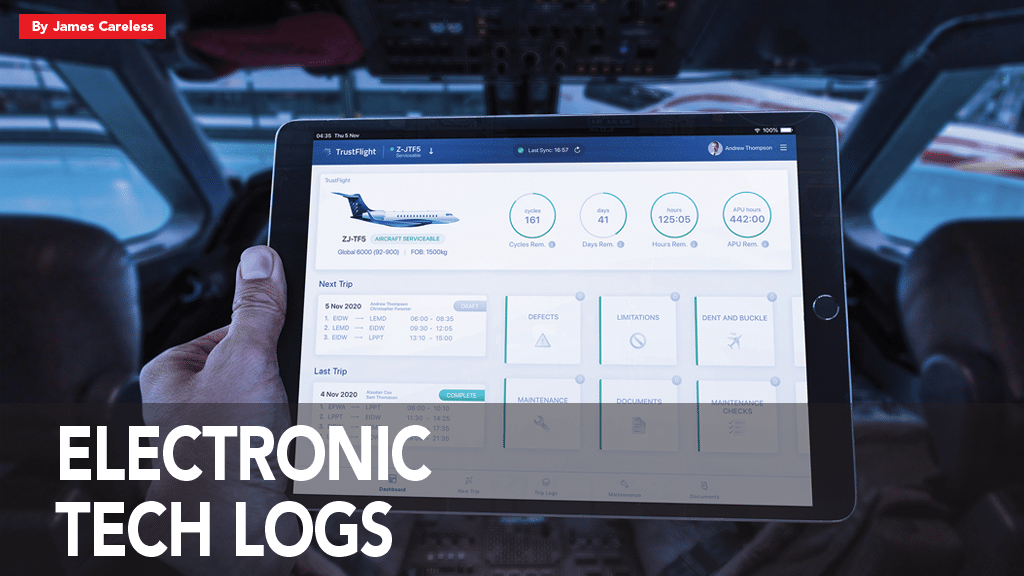
Electronic Tech Logs
May 9, 2023
Whether you call them Electronic Tech Logs (ETLs) or Electronic Log Books (ELBs), the use of digital devices/media for tracking the mechanical/electrical health of aircraft is revolutionizing the aviation maintenance business.
T his is because “an ETL functions as a fully integrated technical, journey and cabin solution that is carried on each aircraft,” said Jack Clancy, UX/UI designer and sales manager with REDiFly, makers of the REDiFly ETL mobile app. “It holds the most recent status of the aircraft in terms of its current maintenance, as well as hours, cycles, fuel, approved signatures and more.”

To get a sense of how big a revolution this is, Aviation Maintenance spoke with ETL/ELB developers/vendors. Our takeaway: The sheer volume of advantages associated with migrating from paper to digitally-based maintenance tracking may well astound you.
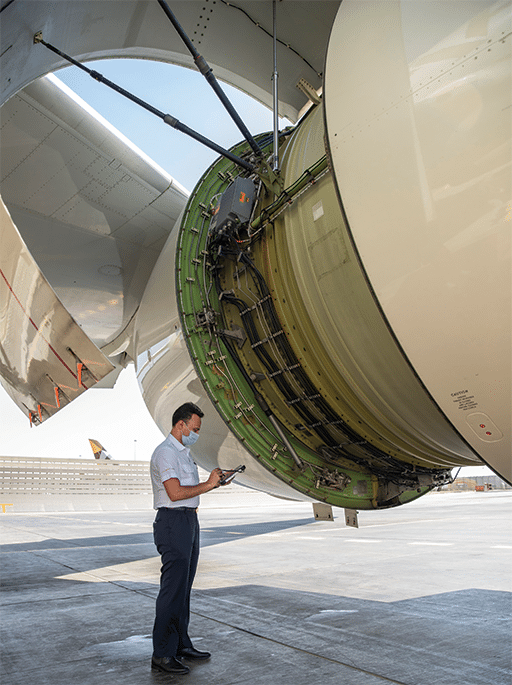
Better Aircraft Maintenance Management
The fundamental purpose of ETLs/ELBs — let’s call them ETLs for convenience’s sake — is to improve the quality of aircraft monitoring, maintenance, and repair management. On all of these points, ETLs definitely hit the mark.
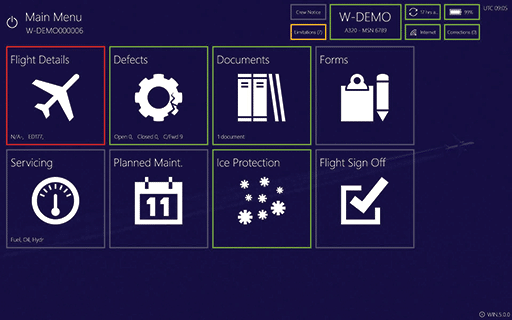
“There are numerous benefits for both airlines and MROs to incorporate an electronic tech log for maintenance” Clancy told Aviation Maintenance. For one thing, ETLs support the recording of real-time data such as the entry of flight hours, cycles, defects/MEL items, and service log data. For another, this maintenance data can be accessed quickly and easily by authorized personnel, even while the aircraft is in flight.
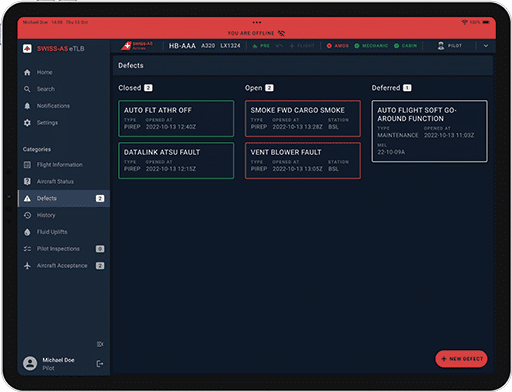
Taken together, this real-time data can be used by MROs to accurately schedule maintenance, optimize the coordinated availability of technicians, and provide complete transparency regarding tools, parts and warranties. In the repair shop, this improved planning process allows for simplified control of line items, decreases the risk of wrongly replaced parts, and enables faster turnaround times. As well, “the CAMO (Continuing Airworthiness Management Organization) department is informed of the ideal times to perform tasks,” said Clancy. Meanwhile, “it is always possible to see if an aircraft is serviceable but not released.”
Proactive Response to Maintenance
When airlines and MROs have regular access to the ETL-captured data outlined above, “it allows them to take a proactive approach to their work and prepare future ground maintenance tasks even during the flight,” said Mathis Even, product marketer with Swiss Aviation Software, makers of the tablet-based AMOSeTL ETL. “Additionally, aircraft mechanics do not need to go back and forth to the flight deck to report their actions into the paper-based Tech Log, because AMOSeTL can capture this data for them. We have also seen that the aircraft acceptance process is much smoother and safer when all data is dash-boarded and summarized for the pilot. He can immediately check if the aircraft is ready to be accepted.”
Over the long term, “obtaining aircraft performance data more efficiently allows the operator to make more proactive decisions based on real information,” said Paul Boyd. He is managing director of the Conduce Group, maker of the eTechLog8 ETL platform. “Software such as eTechLog8 guides users toward selecting the correct data entries as well as ensuring that all mandatory data is complete before data transmission into the airlines’ MCC/OCC departments. The increased consistency of data recording is also significant when you look at the use of this data in predictive maintenance models. In order for potential component failure predictions to be accurate, consistent and reliable data is required at the outset.”
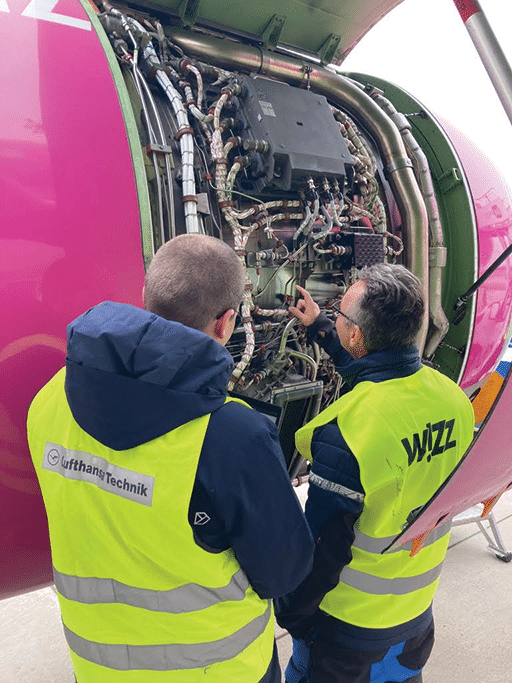
Integration with Maintenance Software Systems
ETLs can be integrated with airline maintenance and flight operations in several ways, and be ported to these airlines’ MROs as well. This ensures that everyone involved in aircraft maintenance has the most up-to-date, accurate picture of what is happening with the aircraft in question, and thus the best chance to service it properly.
In addition, ETLs can be configured to send automatic alerts and notifications to relevant stakeholders when specific maintenance events or operational conditions occur. “For example, if an aircraft component reaches a predetermined threshold that indicates it requires inspection or replacement, the system can automatically notify maintenance crews, flight crews, and other relevant parties,” Clancy said. “Maintenance crews can also use the system to communicate with flight crews about the status of maintenance activities, while flight crews can use the system to provide feedback about any issues they encounter during flight.”
A case in point: “eTechLog8 was designed from the very first line of software code to be totally interoperable across the airlines’ systems,” said Boyd. “Conduce believes that the principle of collecting data once and using it multiple times is paramount. This essential maintenance data can be supported with additional metadata such as component change information, man-hour details, photos of defects and standardization using digitally interactive LOPA charts for cabin defects.
Simpler, More Accurate Process
There is no doubt that technical data recorded using an electronic keyboard will be more accurate than data written down by hand on paper. “Unreadable writing on paper and carbon copies often causes extra effort for maintenance personnel,” said Dajana Kunz, product lead of AVIATAR Technical Logbook, Lufthansa Technik’s ETL product. “A digital solution mitigates that extra work completely and frees capacities which can be utilized elsewhere. Even more so, the ETL’s direct connection to a maintenance and engineering software system saves the effort and time with additional manual entries. Best yet, the whole process of paper transport, scanning and archiving becomes obsolete, which is not only a financial but also an ecological advantage for the airlines using our electronic solution.”

That’s not all: An ETL can simplify non-maintenance tasks such as the mandatory recording of an aircraft’s technical status prior to each flight. “A basic ETL solution will eliminate errors associated with handwriting legibility and calculation errors (e.g., for fuel uplifts),” Cameron Hood said. He is CEO of NVable Europe Limited, maker of the CONVERGE Electronic Techlog ETL. “Generally, they will also manage the time limitations associated with deferred defects and checks, making those limitations visible to both line engineers and maintenance control. Various other advantages can arise with the addition of damage charts, document management, and integration with operational data.”

In contrast, “paper logs are a time-consuming process to fill out as, for example, crew have to manually calculate the flight time,” said Karl Steeves, director of TrustFlight, an iPad-based ETL solution. “Once they are created on carbonized paper, they must be shipped to a records team to then be transcribed into multiple maintenance and operations systems. All of this takes a lot of administration time in an operation.”
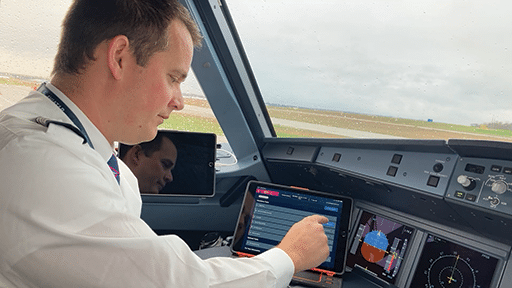
More Control
An ETL makes it possible for an airline to exert more control over various aspects of its business.
For example, when its data is ported to a web portal, the ETL provides near real-time visibility of an airline’s fleet status. “In turn, this allows for better planning and fewer unexpected issues, thereby increasing reliability,” Hood said. “These benefits accrue primarily to the airlines, but are ultimately beneficial to their passengers as well.” For instance, “airline passengers will benefit indirectly if technical problems can be solved faster/sooner e.g., through an advanced dispatch process, reducing technical delays,” said Kunz.
“An ETL provides instant visibility of faults on an aircraft, allowing quicker and better troubleshooting, ultimately reducing delay time,” agreed Steeves. “As faults are recorded as a digital record, they tend to be of better quality than those written down manually. This can lead to benefits when looking at reliability trending with respect to specific parts and/or aircraft.”
ETLs also provide enhanced control of access to aircraft technical logs, giving their operators a justifiable sense of confidence in their historical accuracy. This is because “an ETL provides more control around who is allowed to authorize sections of the technical log,” said Hood. “This ensures that pilots do not authorize a section that only a qualified engineer should be allowed to authorize, and vice versa. It also provides better control over third-party authorizations.”

Better Compliance
The airline industry has to deal with intense levels of scrutiny. Not only do they have to comply with a wide range of regulations in flying aircraft around the globe, they have to be able to prove this compliance before, during and after the fact.
There is no doubt that a digitally-based technical logging system is the best suited to show such compliance on a reliable and accessible basis. “Because these ETL processes are digital, there can be validations, checks and balances to ensure that all data recording processes are completed correctly and in compliance,” Steeves said. “For airlines, this provides a significant safety benefit as you avoid the risk of dispatching an unserviceable aircraft, for example. Of course, cost is also a big factor in all of the above benefits, in addition to reducing the amount of carbonized pads that have to be procured by the airline!”
Easy to Use
Beyond the advantages noted above, one standout fact about ETLs is that they are easier for pilots and technicians to use than paper-based systems. This is because ETL interfaces are designed to be intuitive and simple to work with. Being digital, they can also have their Help menus right at hand for users, avoiding the frantic ‘looking through the index’ associated with paper-based technical logs.

“Key ETL/ELB features such as predefined workflows, embedded MEL/CDL (Minimum Equipment List/Configuration Deviation List), predefined report trees and fault menus, graphical reporting and an intuitive UI all contribute to extremely high data integrity and ease of use,” observed Rob Saunders, director of business development with Ultramain Systems. (This company’s ULTRAMAIN ELB comes with an electronic journey log, integrated technical and cabin logs, a dent-and-buckle chart, eDocs and a Refuel Log among its ETL features.) “All of these things we talk about are designed to simplify the life of the user and make the hard stuff easier.”
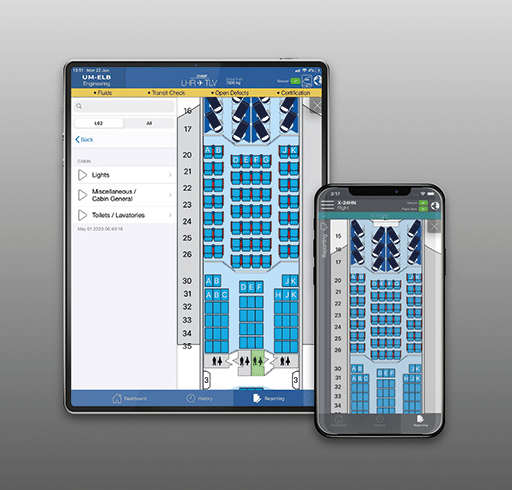
Solid Savings
When it comes to the cost and operational efficiencies associated with ETLs versus paper-based logging systems, “it is easy to see the savings on printing, distribution, collection, data entry, and records storage,” Saunders said. “However, the savings in paper replacement are minor compared to what can be achieved with an ETL that is designed to rationalize the line maintenance operations process. As well, with real-time accurate updates to the user’s management information system, no matter what system is in place, existing back-office processes immediately become more efficient.”
Adoption of ETLs is Slow
With all the benefits that we have enumerated with respect to ETLs in this article, one would expect this technology to be enjoying widespread adoption among airlines and MROs alike. But this isn’t the case. According to Karl Steeves, “adoption is still relatively low, with around 5-10% of operators using ETLs. We generally see the more forward-thinking and process-focused operators adopting these systems first. Often these are low cost carriers and ‘simpler’ single-fleet type operators.”
So why is the aviation industry reluctant to adopt ETLs across the board? “In the early days some vendors had several failed projects,” replied Boyd. “This is often the case with new technology that is being used to solve different issues.”
In recent years, ETLs have been adopted by several airlines including flag carriers, scheduled operators and ACMI capacity providers, he noted. “Conduce customers include the likes of Etihad Airways, Royal Brunei Airlines, Jazeera Airways, Titan Airways, SmartLynx Airlines, Avion Express, Texel Air and other international cargo operators,” said Boyd. Still, “The truth is that, across all ETL vendors, I suspect that the adoption rate is such that still only around 10% of the 30,000 or so commercial airliners operating have an ETL on board today.”
The laptop/embedded ETL options available at the turn of the millennium were limited and had their problems, Saunders added. “Laptops were slow to connect (if at all), while installed EFBs from the OEMs cost tens of thousands of dollars per aircraft, and each change would require Service Bulletin-type recertification,” he said.
Despite the challenges associated with those early ETL days, “leading innovators such as Cathay Pacific achieved groundbreaking achievements in e-enabled operations,” said Saunders. “In 2009 the first Cathay Pacific B777 was operated with STC-installed EFBs in the flight deck and cabin. The cabin device being used was the ULTRAMAIN eCabin log while the ULTRAMAIN eTech log was available on the three flight-deck EFBs.”
The introduction of the iPad a year later made it possible to load flight-related software on lightweight portable devices. These were quickly adopted by flight crews to serve as Electronic Flight Bags (EFBs), replacing the heavy bags of paper manuals they had to carry in the cockpit.
“E-tech logs were expected to follow,” Saunders said. “However, an aircraft maintenance log is not a flight ops document and has never been in a pilot’s leather flight bag. The user demographics are flight crew, cabin crew, and engineering. This fact, along with the slow acceptance of ETLs by regulators and a general underestimation of the complications of online/off-line application capabilities led to few successes over the last 10 years.” Meanwhile, over 1.5m electronically signed sectors later, ULTRAMAIN’s full suite ELB remains available with its aircraft systems integration capabilities.
Change is Coming
In recent years, the aviation industry’s cautious attitude towards ETLs has started to change, albeit slowly. “There are a few well-known maintenance companies that are now emerging with an electronic tech log solution, which is a telling sign that there is a growing demand in the market,” said Clancy. “However, progress takes time, and the aviation industry has been slow to respond to digitalization in the past. Compared with the advent of the EFB a few years ago, we are only now seeing an increased rate of global adoption for the electronic tech log, particularly among the larger scheduled carriers.”
The good news: “Currently we are seeing a major growth of interest of our customers to digitize their flight and maintenance operations,” Even said. “We even see that aviation customers who are purchasing and moving to AMOS today want to go live directly with fully paperless processes; including eSignature. We have ten funding customers who are supporting the final stages of development of our product (released in June 2023). They include low-cost and major airlines, flag carriers, and helicopter operators.”
Ultramain is seeing similar growth in ETL market acceptance. “ULTRAMAIN ELB is deployed and in paperless production use at ten airlines throughout the world with over 100,000 direct users using many different fleet types, both Boeing and Airbus,” said Saunders. “It is being used throughout their network of line stations worldwide by airlines and their third party maintenance providers. Our customers include Cathay Pacific Airways, Japan Airlines, British Airways, Air New Zealand, Airwork, Starlux, Air Hong Kong, Vistara and Scandinavian Airlines.
As these ETL vendors will tell you, the main obstacle blocking widespread deployment of their products is not their capabilities, but the reticence of airlines to take this step.
“There are no doubts about the benefits of an ETL,” said Hood. “The main obstacle is the airline making a strategic decision to implement it. The introduction of an ETL requires effort from the airline and some relatively intense engagement with the local aviation authority. It also inevitably leads to a reassessment of various procedures and realigning those to fit.”
“Conduce believes that there are no real obstacles to the adoption of an ETL,” Boyd agreed. “There are now enough successful implementations that should encourage other operators to look seriously at an ETL project. Obviously, you still need to evaluate the software solution options available and ensure the project is kept simple so that deliverables can be quickly identified and be successful. But Conduce has regularly seen project paybacks for many of its clients being achieved in only one year of operation.”
What’s to Come
Looking forward, airlines and maintenance operators can expect even more capabilities from the ETLs of tomorrow.
“We expect that, in the future, the tech log solutions will offer even more automation, connecting data from various sources and automatically giving recommendations or drawing conclusions based on them,” said Kunz. “The connection of different data points within the logbook will further enable entities to gain business intelligence, make users’ lives easier and enable them to take on new tasks using the logbook.”
“There will be more and deeper system integrations with increasing interchangeable access across multiple platforms such as Windows, iOS, and Android,” Hood predicted. “This will drive additional functionality that will be helpful on the line. Analysis of the stream of data collected will become more automated and intelligent, potentially integrating aspects of machine learning or artificial intelligence. And the onboarding process will become smoother, because our ultimate aim is to allow airlines to ‘self-serve’ the entire ETL process.”
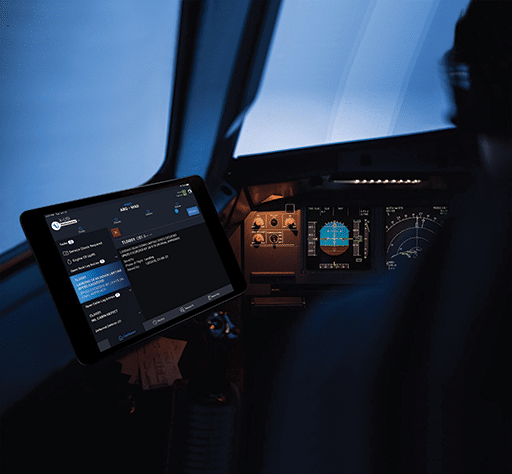
“There are many developments in Aviation IT such as Blockchain, AI (Artificial Intelligence) and Predictive Analytics, all of which we are interested in,” concludes Clancy. “However, for small to medium operators, these concepts may still be a while down the road. So, I believe the future of ETL technology lies in the flexibility of the software and for digital aviation vendors like ourselves to provide a more informative and accessible landscape for the operators we cater for.”
AIMS Journey Log
About this app
Data safety.
What's new
App support, more by aims airline software solutions.

Electronic Tech Log
- Software Search
- Conferences
- Vendor Sign up
- Terms and conditions
- Aircraft IT, Aviation House, The Street, Poynings, BN45 7AQ UK
- [email protected]
- +44 1273 454 235
- twitter.com/aircraftit
- linkedin.com/company/aircraft-it
Viewing journey log details
This page allow you to view journey log details. Tell me more .
Select the “View Journey Log” link in the “Select Journey Log” page. Alternatively, click the hyperlinked journey log number in the multiline of the same page.
The “View Journey Log” page appears.
The system displays the following:
The system displays the following in the “Tech Log Details” group box:
The system displays the following in the “Aircraft Details” group box:
To proceed carry out the following:
Select the “ Leg Details ” tab to view the leg details
Select the “ Summary Parameter Details ” to view the summary parameter details.
The system displays the following fields in the “Summary Parameters Details” multiline:
The system displays the following in the "Operational Details" group box:
The system displays the following in the "Computed Flight Parameters" group box:
The system displays the following details in the “Document Attachment Details” group box:
Click the ‘View File” link to view the contents of the attached file.
To proceed, carry out the following
Select the “ View Operational Interruption Details ” link at the bottom of the page to view the interruption and/or delay details of the flight.
Select the “ View Pilot Reported Discrepancies ” link at the bottom of the page to view the discrepancy details.
Select the “ View Inflight Shut Down Hrs ” link to view the shut down hrs of the aircraft.
Select the “ View Regularized Operational Interruption Details ” link to view the regularized flight interruption details for the journey log.
Select the “ View A/C Maint. Exec. Ref # ” link to view the aircraft maintenance execution details for an aircraft.
Note: The “View A/C Maint. Exec. Ref #” link is not displayed for Offline Usage. (i.e. ‘Usage Mode’ set as “Offline” in the “Configurator” business component.)
The system displays the following in the “Record Statistics” group box:
Viewing journey log details – An overview
In this page, you can view the journey log information. The journey log details such as the journey log number, status, flight date, reporting time zone, starting station, journey log category, tech log number and flight category, can be viewed.
You can also view the following details of the journey log:
The aircraft details such as the aircraft registration number, aircraft model number, manufacturer serial number, configuration class, total take off for the flight and duration of the flight.
The leg parameter mapping and summary parameter details for the journey log.
The document attachement details such as the name of the file at tached as reference.
EFF Journey Log
Improve flight phase data capture within the skybook electronic flight folder.
ABOUT SKYBOOK Request Demo
To view this video please enable JavaScript, and consider upgrading to a web browser that supports HTML5 video
Streamlined Journey Log, designed for pilots
Quickly populate flight journey data, customisable to your flight operations. Our electronic flight folder prioritises user experience and accuracy, making paper a thing of the past.
Capture the most important data such as fuel, delays, de-icing, ground services, crew, waypoints and commander's reports.
All data is securely stored in the app and can be synced to the Ground Portal where it is stored within the skybook Record Vault . This enables operators to use the data for post-flight analytics and operational performance.
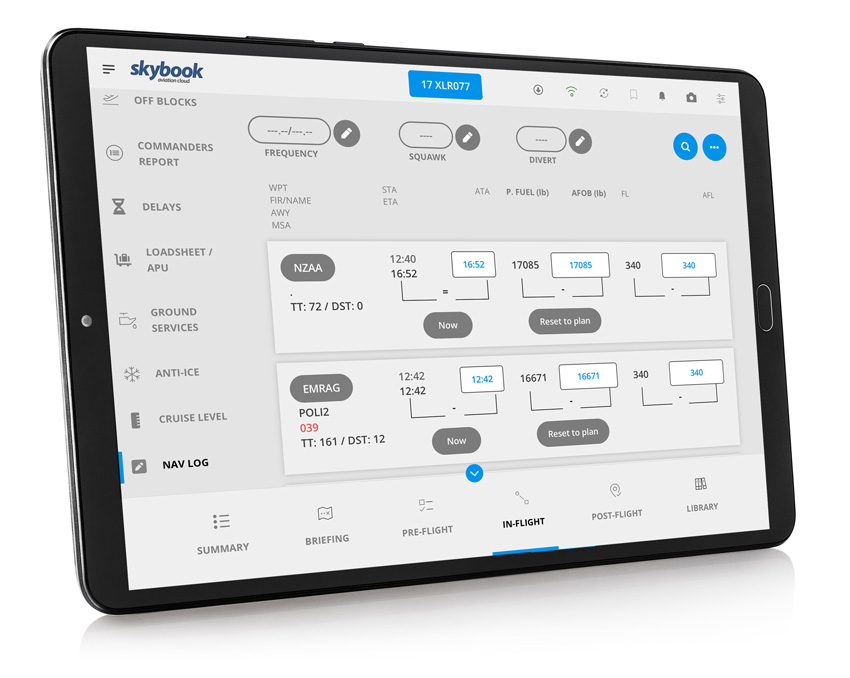
Quickly navigate to vital areas & other integrated apps
Instant access to all the main points of interest including METAR, TAF, charts and MEL Maintenance status; saves pilot's time navigating other areas.
Our integration capabilities mean you can connect the electronic flight folder straight to other pilot applications such as FlightDeck Pro and Lido mPilot.

Prepare for take off with:
- Fuel data (fuel uplift, planned fuel, fuel slip photos & more)
- Departure ATIS / ATC clearances
- Flight crew, commander, duty time

Record journey data as it happens:
- Off blocks / airborne
- Flight delays & codes, de-icing
- Loadsheets, APU, cruise level
- Waypoint info, route direct, divert

Post-flight
Sign off the successful flight:
- Landing times, take-off and landing pilot
- Arrival fuel, planned fuel
- Reports / comments
- Flight sector sign off
Customizable EFB
Transform your workflow! Super Admins can easily personalize fields within the EFB.
- Modify field names & hide irrelevant ones
- Super easy - no coding or training needed
Customize the pilots journey log experience to align seamlessly with your flight operations.
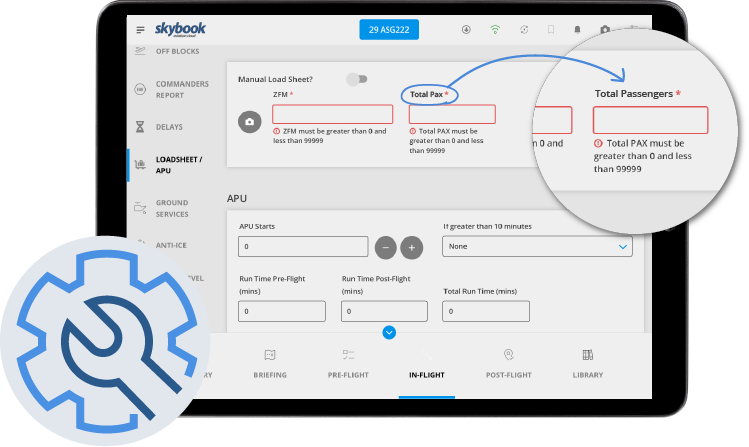
Go totally paperless with skybook Form Builder
Form Builder puts operators in total control with the creation of any form such as the Air Safety Report.
This can be sent to the skybook EFB app for the flight deck to complete. This allows custom data to be captured during the flight, which can then be saved and analysed in the post flight data storage.
Operators can select from a range of templates or designs to match paper forms, with features like mandatory fields.
See Form Builder
Streamline your operations
Whether you are simply looking around or doing some serious research, getting in touch is the first step to find out more about our EFB and flight dispatcher software.
Get in touch
+44 (0)1652 688 626
View Brochure
Request a demo, have a question.
Fill out the form below and one of our skybook specialists will get back to you shortly…
Join our Aviation News
Get access to our latest news & skybook updates
Privacy policy Cookie policy
Subscribe to our Aviation News
Sign up to receive our latest aviation news, insights and exciting skybook product updates.
Head Office
Concorde House
North Lincolnshire
United Kingdom
Hull Office
The Deep Business Centre
Tower Street
Connect with us
In Proud Support

ISO 27001:2013 & ISO 9001:2015
Certified Management System

Registered with the ICO
© 2024 Bytron is a trading division of Keyzo IT Solutions Ltd, Place of registration (England & Wales), Registered number 8199457, VAT number 125318142
Sitemap | Privacy Policy | Cookies
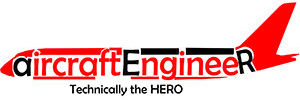
Aircraft Technical Log
Aircraft technical log also know as techlog or log book.
The aircraft technical log is the primary source for technical and operational data on each flight that occurs on an aircraft. This data includes defects and malfunctions, block times and fuel consumption. It also records all maintenance carried out on an aircraft between scheduled base maintenance visits.
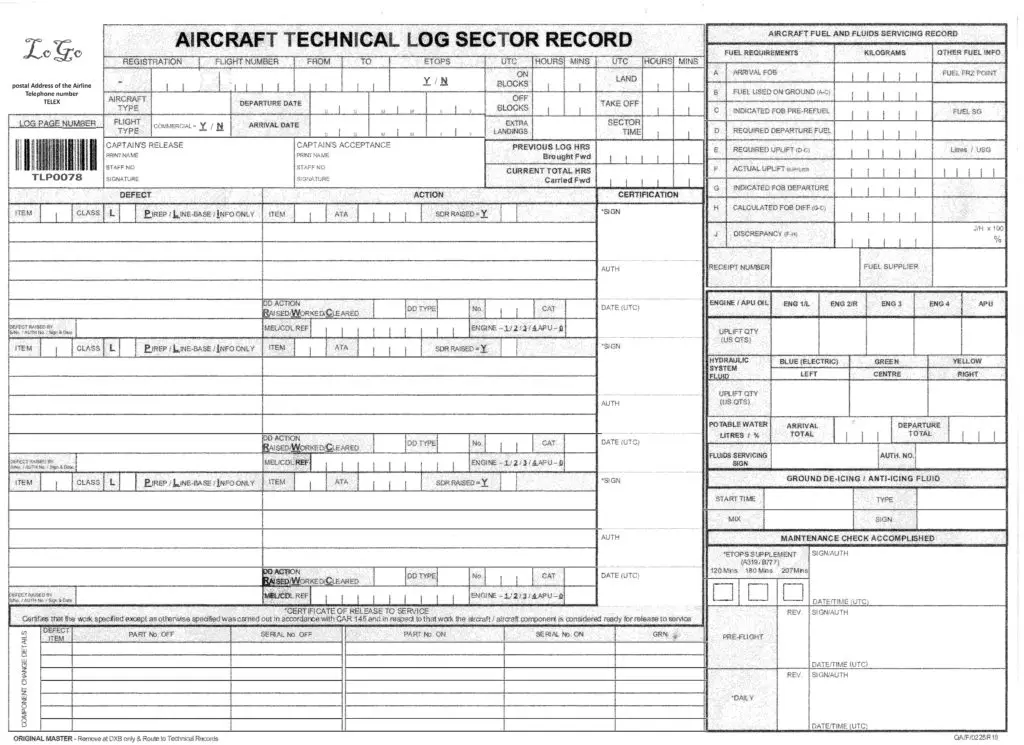
Describe the TECHNICAL LOG with your own word.
Answer:- • Technical log is a document which shall contain all the information of the following:- a. Title page with the registered name and address of the operator, b. Type of aircraft and the full international registration marks. c. Certificate of Maintenance Review. d. Maintenance Statement of next inspection due. e. A readily identifiable section containing sector record pages. Each page shall be Pre-printed with the Operator’s name and page serial number and shall make Provision for recording the following: – The aircraft type and registration mark; – The date and place of take-off and landing. – The times at which the aircraft took off and landed. – Particulars of any defect in any part of the aircraft affecting the airworthiness or Safe operation of the aircraft which is known to the Commander or, if no such defect is known to him, an entry to that effect.
• All Malaysian registered aircraft in either public transport or in aerial work category which has a certificate of airworthiness in force subjected to regulation 29(1), part V, chapter 2 of MCAR shall maintain a technical log.
• The technical log shall be kept by the operator of the aircraft and shall be kept for a period of two year until the aircraft is completely out of service or destroyed (regulation 86,part ix).
• The technical log shall be carried in the aircraft (regulation 82, part ix) and the duplicate of the technical log shall be kept by the operator of the aircraft on ground.
• It is the responsibility of the commander(pilot) to date and sign the completion of the following item in the technical log:- 1. Times when the aircraft take off and landed. 2. Any defect which may affects the airworthiness of the aircraft. 3. Other particulars in respect of the airworthiness or operation of the aircraft as the Director General may require. 4. The arrival fuel state. 5. A Certificate of Release to Service for which the defects has been eliminated. 6. The quantities of fuel and oil uplifted, and the quantity available in each tank,or combination of tanks, at the beginning of each flight. 7. The total hours of flying to determine the next inspection. 8. Provision for pre-flight and daily inspection signatures. 9. The times when ground de-icing was started and completed.
•All the entries above must be made by the pilot immediately upon termination of the flight except in the case of:- -Consecutive flight on same day. -Nothing drop or projected beginning and ending at the same aerodrome. -If the same commander flying the same airplane, the entry can be made on the termination of the last flight. (if there is no defect have occurred on the previous flight).
•When there is additional information need to be added for a specific aircraft the Supplementary technical log will be required. Where the following few examples is required to be recorded. -Maximum or intermediate contingency power.(duration of maximum or intermediate power usage and subsequently to transfer the information to the engine log book or maintenance record). -Landings (Numbers of landing for undercarriage component life consideration). -Flight pressure cycle (Numbers of pressure cycles for fuselage life consideration.).
•The supplementary technical log information shall be assessed by the operator and approved by DCA.
References:
– BCAR Section A, Sub-Section A7-8 Page 1. – MCAR (Regulation 29(1), part V, chapter 2). (Regulation 82, part ix). (Regulation 86, part ix). – Air legislation, instructor note. – Instructor’s slide show.
Click OK to log in and restart your reservation. Click Cancel to continue with your reservation without logging in.
- Skip to global navigation
- Skip to content
- Skip to footer
- Travel alerts Travel alerts
We'll redirect you to the home page of the country / region site you choose.
- Search AA.com® Submit search

Our system is having trouble
Please try again or come back later.
Please tell us where the airport is located.
Any searches or unfinished transactions will be lost.
Do you want to continue your session?
- Skip to main content
- Skip to flight search
- Skip to main menu
- Skip to footer
- Hotel (opens in a new tab)
- Car rental (opens in a new tab)
- eVisa (opens in a new tab)
- Parking (opens in a new tab)
- eSIM (opens in a new tab)
- Activities (opens in a new tab)
Flight search
Manage my booking.
Check your flight details. Specify your dietary requirements, choose seat on board, order a premium meal, request an invoice or change your flight.
Online check-in begins 36 hours before the scheduled departure. Choose one of the check-in options/methods.
If you have been denied boarding or if your flight has been cancelled or delayed for at least two hours, ask at the check-in counter or boarding gate for the text stating your rights, particularly with regard to compensation and assistance.
Starting your journey at one of the following airports? Online check-in is available only on the local airport website. Select a city and check in: Dubrovnik (opens in a new tab) , Podgorica (opens in a new tab) , Sarajevo (opens in a new tab) , Skopje (opens in a new tab) , Split (opens in a new tab) , Tirana (opens in a new tab) , Zadar (opens in a new tab) .
Are you traveling from Baku (GYD) in Azerbaijan or from Athens (ATH) in Greece ? Choose a seat via online check-in option, then proceed to the counter at the airport so we can verify the required documents. We will then give you a boarding pass with a QR code .
Check out information on flights, delays, cancellations and changes in flight schedule.
Passengers with chronic diseases. What is worth paying attention to when preparing for a flight?
Reading time 🕗 4 minutes | April 26, 2024 | The material was prepared by Politykazdrowotna.com
The cabin pressure in most passenger aircraft corresponds to that at 2400-2500 meters above sea level. For our body, therefore, a flight means a trip to Rysy peak that lasts about twenty minutes — because that's how long it takes to ascend — and that's from the altitude of Warsaw, Krakow or Gdansk, not from the foothills of the Tatra Mountains, explains Kajetan Gawarecki, an expert in anesthesiology and intensive care nursing, who also deals with air medical transport. So what rules should passengers diagnosed with chronic diseases such as cardiac problems, asthma, or diabetes follow? In the following material, we provide all the necessary answers to this question.
✅ From this article you will learn:
- What to pay attention to when struggling with chronic diseases and planning air travel.
- What to know before traveling, in case of diabetic diseases.
- What to remember, in case of air travel with cardiovascular diseases.
- How to prepare for a flight, suffering from asthma.
Pressure changes in aircraft — this is worth knowing
Diabetic on board, air travel for people with cardiac problems, asthmatic's peaceful journey, seniors on board. what should you keep in mind when planning air travel, the magic of air travel. how to overcome the fear of flying, flying by plane during pregnancy — what should you pay attention to.
Boeing 787 Dreamliner planes, which operate long-haul flights on LOT Polish Airlines, maintain a pressure equivalent to 1,800-1900 meters above sea level during flight, which is about the same as at the height of Giewont or Kasprowy Wierch. These few hundred meters of difference in pressure sensation can be particularly important for people with chronic ailments. However, it is worth noting that although the cabin pressure during a standard flight is lower than the pressure on land, it is still acceptable for the human body.
The change in pressure can manifest itself as an unpleasant sensation of ear plugging. Here, however, how our body is built comes to the rescue: thanks to the connection between the eardrum cavity and the throat, this pressure can be equalized via the auditory trumpet. So what can help? For example, frequent swallowing of saliva, chewing gum, sucking on a dissolvable candy or.... yawning.
The longer the flight, the greater the fatigue of being in conditions of reduced access to oxygen. A healthy body compensates for this deficit in various ways, such as accelerating breathing and heart rate slightly, making air travel completely comfortable. Some people may, on a flight that lasts for hours, develop symptoms related to the change in pressure. Passengers with respiratory diseases such as chronic obstructive pulmonary disease or cancer, or with circulatory failure, unstable coronary artery disease, or, for example, in the case of children, a heart defect or significant anemia. All of which exacerbate oxygen deficiency in the tissues, should seek medical advice before departure. This will ensure that their trip will be safe. For longer trips that involve a change in time, the timing of medication should be planned accordingly so as not to lead to bodily dysfunction, explains Kajetan Gawarecki.
Diabetes is estimated to affect up to three million people in Poland. The disease is not a contraindication to high-altitude travel. There is also no conclusive evidence to suggest that people with diabetes are more likely to suffer increased discomfort. It is worth noting, however, that large changes in altitude, temperature and decreases in activity can impact blood sugar levels, which may necessitate the administration of insulin.
Fortunately, diabetics can take medications like glucagon and other necessary items to control the disease in their carry-on luggage. It's also a good idea to bring a doctor's certificate and have a “plan B”: patients who use an insulin pump should take a supply of insulin injections or spare batteries for the pump. Likewise with a continuous blood glucose monitoring system: remember spare accessories, batteries, charger or disinfectant liquid before inserting the sensor.
Sound education and good preparation before traveling will help diabetics have a successful and enjoyable time. It is worth remembering, for example, to have a small sweet snack on hand. If a diabetic is traveling with medications or medical equipment, he or she should remember to bring a doctor's certificate and document the condition , concludes Dr. Justyna Kaźmierczak, Ph.
People who face cardiovascular problems on a daily basis should always consult with their health care provider before air travel. There are certain contraindications that should be taken into account before planning a flight. These include a myocardial infarction suffered 7-10 days prior to travel, an exacerbation of coronary artery disease, or uncontrolled arrhythmia. However, if the aforementioned contraindications do not affect the prospective traveler, such a person can freely pursue air travel.
Flight safety also depends on how long the trip will be. It is worth bearing in mind that longer flights of several hours for people with cardiovascular problems may require special preparation. Such a person should absolutely take all necessary medications: especially anticoagulants: on board the plane, as well as medical records. It is also a good idea to inform the flight attendants about the possibility of aggravated ailments. During the duration of the flight, it is also advisable to walk around the plane once every hour or so and perform simple exercises that will reduce the likelihood of venous congestion.
For my patients who are struggling with hypertension or heart disease, I always recommend a check-up visit before a planned trip. This is to see if they have an adequate supply of medication, what their blood pressure is, and how they react to a stressful situation such as an airplane flight. It's important to remember that it's the passenger's health that is key, as the environment on board an airplane itself is by no means dangerous, explains Dr. Aleksandra Szymańska, a specialist in internal medicine.
If the passenger remains in good physical condition, under constant medical care, airplane flight should not be a difficulty for him. Asthmatics may experience changes, usually resulting from reduced pressure in the aircraft cabin, causing breathing difficulties. In such moments, you can always count on the support of cabin crew, who are prepared for such situations. You can also take a mobile inhaler in your carry-on luggage, the capacity of which will not exceed 100 ml.
What distinguishes the air in an airplane from that on the ground is not only the lower pressure, but also the humidity, or rather the lack of it. The air is dry, the humidity in the cabin is only a few: a dozen percent, recalls Kajetan Gawarecki.
It is important to remember that flying by air is one of the safest transportation options in the world, which is primarily due to extremely strict safety procedures and the possibility of receiving professional support from cabin crew.
Any person with a diagnosed chronic disease, whose health condition is stable and whose attending physician does not see any contraindications to flying, can enjoy the opportunities offered to passengers by air travel. What we should always be guided by, however, is the safety of our health therefore, if anything raises doubts: always, before planning a flight, consult a doctor.
Read similar articles
Child on airplane - how to ensure their comfortable journey.
- Rest of World News
- From flight attendant to Japan Airlines' President: The journey of Mitsuko Tottori
From flight attendant to Japan Airlines' President: The journey of Mitsuko Tottori

About the Author
At TOI World Desk, our dedicated team of seasoned journalists and passionate writers tirelessly sifts through the vast tapestry of global events to bring you the latest news and diverse perspectives round the clock. With an unwavering commitment to accuracy, depth, and timeliness, we strive to keep you informed about the ever-evolving world, delivering a nuanced understanding of international affairs to our readers. Join us on a journey across continents as we unravel the stories that shape our interconnected world. Read More
Visual Stories

Nearly 400,000 people travel between Canada and the US daily, and one of the best parts of living in Victoria, British Columbia, is its relative proximity to the state of Washington.
It's common for locals to spend a weekend in Seattle to catch a sports game, see a concert, or do some cross-border shopping.
But even though the cities are pretty close, getting there can be a headache if you don't know what you're doing. Victoria, BC , is located on an island, so unless you're flying, you'll need to take a boat.
Under ideal conditions, traveling there with your car takes at least four to five hours. But when you factor in ferry times, potential delays due to weather, border wait times , traffic, and stopping for gas, it can easily become an eight-hour journey.
Recently, a friend and I took the car ferry between Victoria to Vancouver to get to Seattle. Here's how it went, and what you need to know before booking a trip.
There are several options for getting to mainland Washington from Victoria, BC.
The Victoria Clipper offers the fastest direct route between Victoria and Seattle, but it's a passenger-only ferry.
If you want to take your vehicle, you'll either need to take the Blackball "Coho" Ferry to Port Angeles, Washington, or BC Ferries to Vancouver and drive two to three hours to Seattle.
We wanted to stop at Seattle Premium Outlets in Tulalip, Washington (about an hour outside of Seattle). And since we'd be stateside, we'd have the opportunity to stop at Trader Joe's to stock up on our favorite American snacks.
Having a car would make both pit stops easier, so we decided to book tickets on BC Ferries.
Tickets vary depending on your vehicle, the number of passengers, and their ages. Vehicles under 20 feet cost 67.40 Canadian dollars, or about $49, each way. But that cost doesn't include the driver or any other passengers.
Adult fares are 19.10 CAD each way, so our total for one way on the ferry was 105.6 CAD.
If you’re traveling on a weekend, make a reservation and get there early.
Since we were taking our car, we needed to factor in the driving time to the ferry dock in Swartz Bay, located about 30 to 45 minutes outside of Victoria.
BC Ferries serves travelers from all around Vancouver Island and the lower mainland of British Columbia. Weekends are typically busy, and popular sailings can sell out.
Traffic is also busier on the weekends , so give yourself plenty of time and arrive at least 30 minutes in advance.
I recommend booking a reservation online to guarantee your spot on a specific sailing. Reservations cost an extra 20 CAD, but I think it's well worth it.
Even if you have a ferry reservation, know that there's a chance your ferry can get canceled or delayed due to weather conditions — forcing you to take the next sailing in one or two hours.
There are gorgeous views throughout the ride, which made up for the lack of Wi-Fi.
One of the things I love about taking the 90-minute boat from Victoria to Vancouver is the incredible scenery and ocean views . If the weather is decent, I recommend sitting outside.
There are picturesque islands covered in lush forests, and you may even spot a pod of whales or dolphins if you're lucky.
But if you plan on catching up on your favorite shows, download content before the ferry departs. There were no Wi-Fi options on board.
Since mobile reception is also spotty, I used the trip to catch up on work using offline apps and take in the scenery.
There’s a restaurant on the ferry, and it's actually decent.
The onboard cafeteria offers everything from coffee and desserts to local specialties, like Nanaimo bars (a classic BC layered treat) and White Spot burgers.
Surprisingly, I don't mind the ferry food, even though it tends to be pretty expensive. If you're not sure what to get, skip the prepackaged salads and get the poutine.
At about 7 to 8 CAD, it's one of the cheapest things on the menu, and it's tasty and filling.
But if you don't want to deal with lines or crowds, you should bring your own meals.
There's pretty much always a line at the cafeteria — on my last trip, I waited 30 minutes to order a burger and a Diet Coke. The dining area is also jam-packed with fellow travelers and has the vibe of a crowded mall food court at sea.
The arrival process is pretty straightforward.
The crew makes an announcement asking passengers to return to their cars 15 minutes before docking. That's when I usually sneak in a last-minute trip to the restroom before heading down to the car deck.
We spent about 10 minutes in the car waiting for the boat to dock before driving off.
We made our way to the Peace Arch Border Crossing.
The ship docks in Tsawwassen, a small town outside of Vancouver, and it's about a 40-minute drive to the Canada-US border.
This drive always gives me anxiety because you can't predict how long the wait will be.
We were lucky and only had to wait about 20 minutes on this trip. But hours-long queues at the border are common, especially if there's a special event happening in Seattle like a Taylor Swift concert or a Mariner's game.
If possible, avoid driving into Seattle during rush hour.
Traffic jams are also common on what should be a two-and-a-half-hour drive from the border crossing to Seattle, especially as you get closer to the city.
There have been previous trips where it's taken me four hours because I got stuck in a gridlock, so I always do my best to avoid getting there anywhere near rush hour.
We opted to stay overnight in Seattle.
It's technically possible to go to Seattle for the day via the car ferry, but you'd only have a few hours in the city before turning around and catching the last ferry home at 10 p.m.
I recommend booking a one-night stay at The Edgewater — an iconic Seattle hotel with a storied history of hosting legendary musicians like the Beatles, Led Zeppelin, and Pearl Jam.
My room cost 329 CAD, and we loved the incredible waterside views, the central location, and the easy car access.
I kind of wish I didn't have my car in Seattle.
Since we stayed in downtown Seattle, we were within walking distance of Pike Place Market , the Nordstrom flagship store, and buzzy dining options in Belltown.
We also spent an afternoon exploring the trendy Capitol Hill neighborhood, located a 10-minute drive from downtown. But we ended up taking an Uber because we knew it'd be easier than finding our own parking on the weekend.
The city has a public transit system that includes a light rail, a monorail, and streetcars, so it's pretty easy to get around without a car.
When I compare the time and money spent, I wish I’d left the car at home.
In addition to the roundtrip ferry fare (with corresponding fees and taxes), my friend and I spent about 82 CAD on gas, bringing our total transport costs for the weekend trip to 323 CAD, not including the hotel stay .
I've taken the Victoria Clipper passenger ferry to Seattle for past trips, and although it's more expensive (344 CAD per adult, roundtrip), I found it to be a much more relaxing experience.
Our car-ferry journey took about five and a half hours, start to finish. But on the passenger ferry, I've boarded the boat at 5 p.m. and made it to my Seattle hotel by 8:15 p.m.
As a single woman who'd rather spend her weekend exploring one of her favorite cities than sitting in traffic, the passenger ferry is my preferred mode of transportation.
With that said, the car ferry has its advantages.
If you're traveling as a family or group, it's considerably cheaper than the passenger ferry. A roundtrip for a family of four on BC Ferries costs around 231 CAD, whereas the same trip on the Victoria Clipper would be around 866 CAD.
Additionally, if you plan on doing a lot of shopping or any outdoor activities outside of Seattle, it usually makes sense to have a car.
- Main content

IMAGES
VIDEO
COMMENTS
This is the full-size, hard-cover format (8.5" x 11") new Journey Log. Our latest release of this classic has 25% more pages! It has been designed to meet the requirements of the Canadian Aviation Regulations. As permitted by the CARs, this new-style journey log is much simplified from the older formats, allowing the pilot to complete entries ...
A journey log is primarily used to document information about the flights. In many countries and jurisdictions, it's required that the aircraft owner maintain this log for at least one year. Some flight logs may include technical information about maintenance and inspections, but almost all will include information about flight dates, crew ...
Wikis > Rules and Regulations > Journey log. Journey log. (a) An operator shall retain the following information for each flight in the form of a journey log: 1. aeroplane registration; 2. date; 3. name (s) of crew member (s); 4. duty assignment of crew member (s); 5. place of departure; 6. place of arrival;
Streamlined Journey Log, designed for pilots. Quickly populate flight journey data, customisable to your flight operations. Our electronic flight folder prioritises user experience and accuracy, making paper a thing of the past. Capture the most important data such as fuel, delays, de-icing, ground services, crew, waypoints and commander's reports.
A Journey Log, also referred to as a flight log or aircraft logbook, is an essential document meticulously maintained by aircraft operators to record comprehensive details of each flight undertaken by an aircraft throughout its operational lifespan. This log is a vital record-keeping tool, providing a comprehensive history of the aircraft's ...
The Aircraft Technical Log ('tech log') is a process used to record and document the airworthiness status of the aircraft. Principally, the tech log will consist of a form completed on each flight or trip and supporting documentation on maintenance procedures and any deferred defect or damage on the aircraft. The form is used to record ...
The specific language is, "A journey log book shall be maintained for every airplane engaged in international air aviation in which shall be entered particulars of the airplane, its crew, and each journey." 2.8.2. It is recommended the log contain the following: Airplane nationality and registration. Date. Crew member names and duty ...
Jeppesen Aviator Journey Log Aviator's Journey Log, a feature within the Aviator Briefing module, enables airlines to capture a wide range of information about the flight from pilots. Airlines can tailor the Journey Log to their operational requirements using custom fields, ensuring all required information about the flight is saved for post ...
Aircraft logbook. Digital aircraft logbook is an official and legal way by EASA MLR.110 and FAA AC 120-78A. All your pilots with a copy of the aircraft journey log in the smartphone. Following export formats are available: Thank you so much for taking a minute to share your thoughts with us! Pilot Logbook, VFR navigation, Flight School Software ...
When it comes to flight phase data capture, our EFB solution leads in streamlining the workflow of pilots with the digital journey logging. The skybook user interface makes the EFB app more intuitive by focusing on pre-flight, in-flight and post-flight data. This goes even further by automating things like fuel calculations and nav log data ...
Typical findings would be things such as inconsistent data, flight details not recorded in the journey log, journey logbook not onboard, etc. ICAO Recommendations for. Journey Log Documentation (ICAO Annex 6) Aircraft nationality and registration. Date. Crew member names and duty assignments. Departure and arrival points and times.
'Journey log, or equivalent' means that the required information may be recorded in documentation other than a log book, such as the operational flight plan or the aircraft technical log. 'Series of flights' means consecutive flights, which begin and end: within a 24-hour period;
This is the full-size, hard-cover format (8.5" x 11") new Journey Log. Our latest release of this classic has 25% more pages! It has been designed to meet the requirements of the Canadian Aviation Regulations. As permitted by the CARs, this new-style journey log is much simplified from the older formats, allowing the pilot to complete entries ...
FLAP® Journey is the electronic version of the journey log report carried in every commercial aircraft, allowing the captain to register the journey log data through an iPad device. FLAP® Journey has a set of forms to allow users to view and update flight times, takeoff and landing data, flight delays and delay reasons, crew assignment and ...
• Technical Log • Flight/Journey Log • Deferred Defect Log (Hold Item List) • Fuel Uplift Log • Flight Acceptance Log • Cabin Log While often not the focus of current ELB/eTL products in the market or the initial scope of requirements for airlines, typically a paper Technical Logbook will also include:
Electronic Tech Logs. May 9, 2023. Whether you call them Electronic Tech Logs (ETLs) or Electronic Log Books (ELBs), the use of digital devices/media for tracking the mechanical/electrical health of aircraft is revolutionizing the aviation maintenance business. T his is because "an ETL functions as a fully integrated technical, journey and ...
The Journey Log app allows the pilot responsible for the report, to enter the Aircraft Journey Log data directly into AIMS without logging in to AIMS eCrew. When internet connection is not available, in order to maximize efficiency, this app features an offline mode, in which all data input is stored locally. ... - Record details of each flight ...
Aircraft Flight Log Template. Provided to NBAA members by Certified Aviation Manager (CAM) Bill Hunter, this log offers aircraft operators and owners a simple tool for referencing an aircraft's recent flight history. Keep track of your flight time, special equipment, crew information and maintenance cycles on the easy-to-use digital ...
Whether you have a single aircraft or a fleet of hundreds, our electronic Tech Log will aid in your operations and provide the information you need, when you need it. Fully digital Tech Log recording with journey and flight logs. Automated data import from popular flight planning, scheduling and maintenance systems.
In this page, you can view the journey log information. The journey log details such as the journey log number, status, flight date, reporting time zone, starting station, journey log category, tech log number and flight category, can be viewed. You can also view the following details of the journey log:
Quickly populate flight journey data, customisable to your flight operations. Our electronic flight folder prioritises user experience and accuracy, making paper a thing of the past. Capture the most important data such as fuel, delays, de-icing, ground services, crew, waypoints and commander's reports.
Aircraft technical log also know as techlog or log book. The aircraft technical log is the primary source for technical and operational data on each flight that occurs on an aircraft. This data includes defects and malfunctions, block times and fuel consumption. It also records all maintenance carried out on an aircraft between scheduled base ...
Tracking 13,521 airborne aircraft with 705,209,705 total flights in the database. FlightAware has tracked 170,792 arrivals in the last 24 hours. Best Flight Tracker: Live Tracking Maps, Flight Status, and Airport Delays for airline flights, private/GA flights, and airports.
Taking a trip? We have your travel plans covered. Flights; Hotels , Opens another site in a new window that may not meet accessibility guidelines.; Cars , Opens another site in a new window that may not meet accessibility guidelines.; Vacations , Opens another site in a new window that may not meet accessibility guidelines.; Cruises , Opens another site in a new window that may not meet ...
The cabin pressure in most passenger aircraft corresponds to that at 2400-2500 meters above sea level. For our body, therefore, a flight means a trip to Rysy peak that lasts about twenty minutes — because that's how long it takes to ascend — and that's from the altitude of Warsaw, Krakow or Gdansk, not from the foothills of the Tatra Mountains, explains Kajetan Gawarecki, an expert in ...
In 2024, a rare total solar eclipse will pass over the U.S., Canada, and Mexico. Millions will have the chance to see the moon completely block out the sun, revealing our star's ghostly atmosphere ...
Tottori's appointment places JAL among the less than 1% of Japan's top companies led by women. "I don't think of myself as the first woman or the first former flight attendant.
The DOT says that the policy covers bags that aren't delivered within 12 hours of a domestic flight arriving at the gate, or 15 to 30 hours for an international flight, depending on the length of ...
Our car-ferry journey took about five and a half hours, start to finish. But on the passenger ferry, I've boarded the boat at 5 p.m. and made it to my Seattle hotel by 8:15 p.m.
On Thursday, some 549 flights in or out of the airport were delayed and 31 canceled, according to airplane tracker site FlightAware.Of those delays, 302 were Emirates flights - 65% of the UAE ...